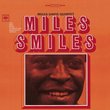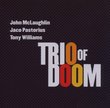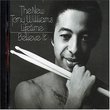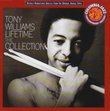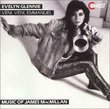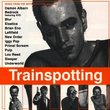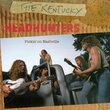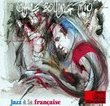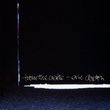| All Artists: Tony Williams & Lifetime Title: Emergency Members Wishing: 3 Total Copies: 0 Label: Polygram Records Original Release Date: 1/1/1969 Re-Release Date: 10/28/1997 Album Type: Original recording remastered Genres: Jazz, Pop, Rock Styles: Jazz Fusion, Modern Postbebop, Bebop Number of Discs: 1 SwapaCD Credits: 1 UPC: 731453911727 |
Search - Tony Williams & Lifetime :: Emergency
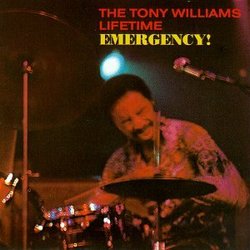 | Tony Williams & Lifetime Emergency Genres: Jazz, Pop, Rock
Japanese only pressing, 24-bit remastered reissue of the late jazz/fusion drummer's 1969 album. Sony. 2005. |
Larger Image |
CD DetailsSynopsis
Album Description Japanese only pressing, 24-bit remastered reissue of the late jazz/fusion drummer's 1969 album. Sony. 2005. Similar CDs
Similarly Requested CDs
|
CD ReviewsClassic Bill Your 'Free Form FM Handi Cyber | Mahwah, NJ USA | 07/29/2009 (5 out of 5 stars) "Miles Davis may have added rock beats to jazz, but it was Tony Williams Lifetime that made jazz rock. Williams, John McGlachlan and Larry Yound formed no less than a jazz power trio in 1969. This music has complex soloing and collosus drumming. But this band plays so hard and so loud, this advanced music has a 100% rock impulse. Picture John Coltrane joining Cream, and you might get an idea of what Lifetime's musical instincts were. But unlike most power trios, Lifetime did not need a bass. Larry Young is a brilliant organist, but a minimalist. His style is subtle and lends itself well to comping for the guitar and drums' virtuoso excursions. For the function he serves, he is not even using his foot pedals as much as you would think. Most of the music's bottom--and there is not a lot of it-- comes from his organ chords. Williams lays complex poloyrhythms on top of one another, taking the music far from its center of gravity, and then snapping it back at just the right point to create an incredible dynamic. It's ironic that this material is more rock-oriented than Miles' work at the time, since Miles main change was to provide a much more straight ahead bottom to his music. Lifetime is so hard and heavy, their music can afford to function on an IMPLIED bottom and still work as rock Mcglachlan's axe is dense and loud, but his playing has its heart in jazz improvosation and not rock crunchiness. Williams also sings on this, and like with any old friend I love and respect, I'll avoid the subject. The sound on this is horrible. In 1969 recording technology has improved by leaps and bounds, and there is no excuse for the tinny, transister radio buzz of this music; given the times, the engineer must have dropped a few tabs before going to work. In 2009, there is no excuse for Emergancy to still sound so bad. There has got to be a way today's digital technology can fix this. If any music deserves it, this does." Horrible sound, great music Lovblad | Geneva, Switzerland | 03/25/2008 (4 out of 5 stars) "Now this is supposed to have been a quite ground-breaking record. The music is really splendid but the sound quality is really horrible and does distract somewhat since a lot of older stuff is available where both production and transfers do the music more justice." A gem released muzo | p.e . I . canada | 11/22/2008 (5 out of 5 stars) "This album has been a must hear for a long time, but was always out of print, and vinyl copies not always easy to track down, especially pre internet.
Miles Davis heard this then had McLaughlin play on 'In a Silent Way'. I'm not sure of the dates, if this is true : however the playing is fabulous from all three musicians. Inspired musicianship from Tony Williams ,Larry Young, and John McLaughlin. the singing is actually more like talking its infrequent and not bad at all. the poor sound quality is the complaint most encountered , this is minimal. All musicians are heard clearly! and now is your chance to snap up a fusion, jazz rock or whatever you want to call it ,masterpiece. lets just call it inspired music" |

 Track Listings (8) - Disc #1
Track Listings (8) - Disc #1